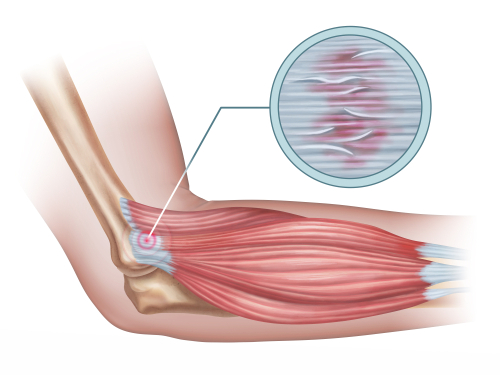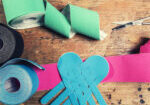Comparison of Interventions for Tennis Elbow aka Lateral Elbow Tendinopathy
Filed under Treatments, Uncategorized
Reference:
Lowdon, H., Chong, H. H., Dhingra, M., Gomaa, A.-R., Teece, L., Booth, S., Watts, A. C., & Singh, H. P. (2024). Comparison of interventions for lateral elbow tendinopathy: A systematic review and network meta-analysis for patient-rated tennis elbow evaluation pain outcome. The Journal of Hand Surgery, 49(7), 639–648. https://doi.org/10.1016/j.jhsa.2024.03.007
Brief Overview:
This Level 1 evidence article is a systematic review of treatments for tennis elbow also known as lateral epicondyle tendinopathy across various randomized controlled trials. The research aimed to identify which interventions provided the most benefits compared to any placebos for short-term (up to 6 weeks) and midterm (6 weeks up to 6 months) outcomes. In treating tennis elbow, a variety of interventions are typically used, including activity modification, physiotherapy, orthotics, medical treatments (including injection therapies), and surgery. The researchers of this study aimed to expand the evidence on this subject by comparing interventions to placebos and control groups.

Methods:
The evidence was collected following the Cochrane Handbook standard systematic review protocol. The study included a total of 13 randomized controlled trials (RCTs) and quasi-RCTs. Eligible criteria included adult patients aged at least 18 years, interventions (therapy, injection therapy, extracorporeal shockwave therapy [ECSWT], acupuncture/dry needling, and surgical release), control/placebo or other included intervention comparisons, PRTEE pain score, and sufficient data. The outcome measures were the Patient-Rated Tennis Elbow Evaluation (PRTEE) pain score, a validated 15-item questionnaire consisting of pain and function specific to lateral epicondyle tendinopathy.
Results and Conclusions:
Therapy and exercise showed improvement in the PRTEE pain score during midterm follow-up. The study showed that dry needling may yield potential short-term benefits, but individual response varied. Two injection therapies, autologous blood and steroid injections, improved PRTEE pain score at midterm follow-up. Orthotics, ECSWT, TENS, and surgery showed no statistically significant benefit according to the PRTEE pain score. Researchers concluded that the results should be interpreted with caution because of the limited amount of evidence that met the criteria. The optimal treatment for lateral epicondyle tendinopathy is still not concrete; however, physiotherapy or exercise is the intervention best supported by evidence.
Rating:
4/5 – This article is a Level 1 therapeutic evidence article, a high ranking of evidence. The authors considered the most common interventions and effectively discussed how the trials used supported their conclusions.
2 Comments
Leave a Comment
More To Read
Intrinsic Hand Strengthening with Puttycise Tools
We are always looking for ways of the intrinsic hand strengthening. It is easy to overlook the importance of these small but mighty muscles. They are essential to performing functional grasps patterns. They can become weak in a short period of time due to their small size. So, How does intrinsic strengthening work?! The Basics…
Read MoreWhich orthosis design is better for zone 5-6 extensor tendon injuries, a relative motion orthosis compared to a dynamic extension orthosis?
M. Buhler, ˝ D. Gwynne-Jones, M. Chin et al., (2023) Are the outcomes of relative motion extension orthoses noninferior and cost-effective compared with dynamic extension orthoses for management of zones V-VI finger extensor tendon repairs: A randomizedcontrolledtrialJournalofHandTherapy. The Skinny: The aim of this study was to compare the data for two different types of orthoses…
Read MoreDiscovering Connections Between Trigger Finger and Dupuytren’s
Discovering Connections Between Trigger Finger and Dupuytren’s By: Tayer Roost Reference: Yang, Gehring, M., Bou Zein Eddine, S., & Hettinger, P. (2019). Association between stenosing tenosynovitis and dupuytren’s contracture in the hand. Plastic and reconstructive surgery. Global open, 7(1), e2088–e2088. https://doi.org/10.1097/GOX.0000000000002088 The Skinny: This retrospective chart review discussed the possibility of a correlation between stenosing…
Read MoreAll about kinesiology taping for upper extremity injuries and conditions!
All about kinesiology taping! Elastic is also known as k-tape, Kinesio-tape, and kinesiology taping. Elastic tape is all over the marketplace and is often seen on professional athletes. It can be found in most therapy clinics and is used to treat both orthopedic and neurological conditions. There are limited studies supporting the use of…
Read MoreSign-up to Get Updates Straight to Your Inbox!
Sign up with us and we will send you regular blog posts on everything hand therapy, notices every time we upload new videos and tutorials, along with handout, protocols, and other useful information.







Any details on the therapy and exercise used?
The meta analysis did state specific exercises as it reviewed several articles all with different exercises.